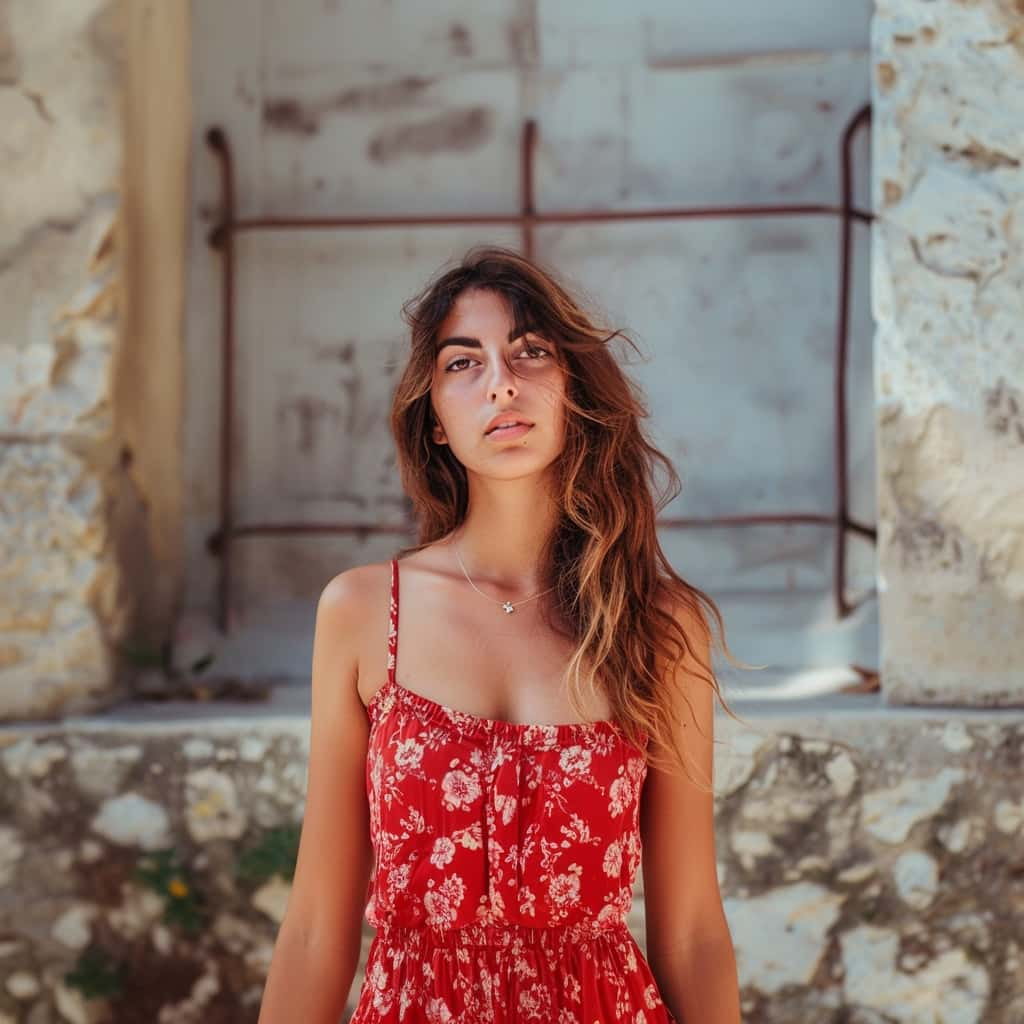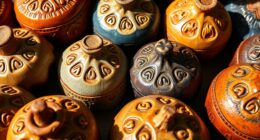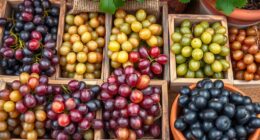Have you ever found yourself lost in the delicate aromas of a well-aged Cabernet Sauvignon, or captivated by the smoothness of a buttery Chardonnay? Each wine tells a story—an unforgettable fusion of terroir, craftsmanship, and history. Your journey into the world of wine tasting can be exhilarating, transforming ordinary moments into extraordinary memories. From the scenic views of rolling vineyards to the intimate gatherings around perfectly paired meals, the perfect wine tasting experience invites you to explore flavors and make connections with friends, family, and even new faces. It’s not just about sipping; it’s about savoring, engaging, and discovering.
Whether you are hunting for the best wineries to visit or planning the next casual gathering, your story in the wine world awaits. With countless top wine tasting destinations to explore, you can immerse yourself in the beauty and depth of each glass. Gather your favorite wines, invite your friends, and create memories that linger long after the last drop has been poured. The adventure of wine tasting is yours to embark upon, and it’s bound to be a journey filled with joy, laughter, and unforgettable experiences.
Key Takeaways
- Engage with diverse flavors, aromas, and stories behind each bottle.
- Five to seven wines are ideal for small gatherings.
- Plan for more wine than you think you’ll need to avoid running out.
- Combine wine with food to elevate the tasting experience.
- Set a warm atmosphere with suitable lighting and details.
- Share short stories about each wine instead of lengthy lectures.
- End gatherings with a sophisticated nightcap to celebrate the experience.
What Is a Wine Tasting Experience?
A wine tasting experience is a captivating event where you can sample various wines while gaining insights into their production methods, historical backgrounds, and distinctive characteristics. These experiences typically take place at venues such as wineries, wine shops, or specialized wine tasting events. Engaging in a wine tasting allows you to appreciate the complex flavors derived from different grape varieties and regions.

Generally, a wine tasting session can last anywhere from under an hour to several hours, with most tasting rooms capping visits at around two hours. During each tasting, you might have the chance to enjoy pours of five to six different types of wine. To fully enjoy the diversity of wines, it’s advisable to visit three or more tasting rooms throughout the day. This approach helps you experience a variety of flavors without overwhelming your palate or risking intoxication.
While many wine tasting rooms focus solely on the wine, some may offer a basic charcuterie board to complement the experience. To enhance your enjoyment, consider having a substantial breakfast before your first tasting. This preparation can help avoid becoming intoxicated too early in the day.
Researching which tasting rooms provide food or allow you to bring outside snacks plays a vital role in maintaining your energy levels and enjoyment during the wine tasting experience. Engaging with knowledgeable staff during your visit can deepen your understanding and appreciation of each wine, making your time memorable and informative.
Top Wine Tasting Destinations to Explore
When planning your next wine tasting adventure, consider exploring some of the top wine tasting destinations across the United States and beyond. Each unique region offers its own charm, varietals, and experiences that cater to every wine enthusiast.
Napa Valley stands out as a classic choice, renowned for its world-class wineries producing exceptional Chardonnay, Cabernet Sauvignon, and Pinot Noir. Visitors flock to over 400 wineries and numerous urban tasting rooms, making it a premier destination for wine lovers.
Sonoma County also boasts an impressive selection with over 425 wineries situated across 60,000 acres. This region features 19 American Viticulture Areas, providing diverse tasting experiences that complement its beautiful landscapes.
The Finger Lakes in Upstate New York has recently gained popularity among travelers, showcasing more than 100 wineries. Notable accommodations like The Inns of Aurora enhance the experience, allowing visitors to immerse themselves in the local wine culture.
Oregon’s Willamette Valley deserves attention too, with approximately 700 wineries peppered across 150 miles and 11 unique sub-AVAs. This region is dedicated to producing high-quality Pinot Noir and offers breathtaking scenery along the way.
Other noteworthy regions include Yakima Valley in Washington, known for its six American Viticulture Areas, and the vibrant wine scene of Texas with inviting wineries such as Driftwood Estate Winery and Pedernales Cellars. Don’t overlook Vermont, where natural wines from places like Shelburne Vineyards draw attention in the summer and fall.
As you explore these top wine tasting destinations, keep an eye on the best wineries to visit. North Fork in Long Island has emerged as a favorite getaway, featuring a variety of wineries, farm-to-table dining, and comfortable accommodations like American Beech.
To elevate your travel plans even further, consider international selections, such as the iconic regions of Bordeaux and Burgundy in France, or Italy’s Tuscan hills, renowned for their unique grape varieties. Wine lovers will appreciate the robust experience across these spectacular destinations.

Wine Tasting Tips for Beginners
Embarking on your journey into the world of wine can feel overwhelming, especially with so much information to digest. Utilizing effective wine tasting tips can significantly improve your overall wine tasting experience. A solid starting point is familiarizing yourself with essential wine terminology, which opens up a new dimension to your tastings.
Understanding Wine Terminology
Knowledge of key wine terms enhances your ability to appreciate and describe what you’re tasting. Focus on terms such as:
- Acidity – Vital for the freshness and balance of wine.
- Tannins – These create a drying sensation, primarily in red wines.
- Body – Refers to the weight or fullness of the wine in your mouth.
- Finish – Indicates the lingering flavors after swallowing.
- Complexity – Describes the layers of aromas and flavors that unfold during tasting.
By understanding these terms, you will deepen your sensory experience and make informed evaluations during tastings. To fully appreciate the nuances of flavor, aroma, and texture in foods and beverages, it is important to understand the vocabulary and concepts used in sensory evaluation. By familiarizing yourself with terms such as acidity, tannins, and mouthfeel, you can better articulate your preferences and articulate the qualities you enjoy in a particular product. Ultimately, by learning to describe and appreciate the complexities of what you consume, you will discover the art of savoring and truly enjoying the sensory experience.
Choosing the Right Amount of Wine
When attending or hosting tastings, knowing how much wine to serve is crucial. Aim for about 5-7 different wines per session for small groups. This allows each participant to explore diverse flavors without overwhelming their palates. Each pour should be generous enough to facilitate swirling, which helps in releasing aromas, yet moderate to ensure everyone can fully appreciate each tasting without fatigue.

This approach not only enhances the wine tasting experience but also keeps discussions lively as you delve into the nuances of each bottle. Embrace these initial wine tasting tips to cultivate your palate and enjoy your adventures in wine tasting.
| Term | Definition |
|---|---|
| Acidity | Essential for a wine’s freshness and crispness. |
| Tannins | Compounds that provide structure and a drying sensation. |
| Body | The overall weight and fullness felt in the mouth. |
| Finish | The aftertaste that lingers after swallowing. |
| Complexity | Variety and depth of aromas and flavors in the wine. |
Best Wineries to Visit: A Guide
Embarking on a journey to discover the best wineries to visit can transform your wine tasting experience into something truly unforgettable. With over 3,500 wineries scattered across more than 250 wine regions worldwide, you have countless choices waiting to be explored. Whether you crave the robust flavors of a Cabernet Sauvignon from Napa Valley or the diverse offerings of grape varieties in Sonoma, each region brings its unique charm.
Highlighting Popular Regions
Regions like Tuscany, Bordeaux, and Porto & Douro are well-known for their exquisite wines. Each locale has its characteristics that make it stand out:
- Napa Valley: Famous for its iconic Cabernet Sauvignon.
- Sonoma: Offers a variety of grape growing environments and styles.
- Tuscany: Renowned for Chianti and picturesque landscapes.
- Bordeaux: Celebrated for World-Class blends and history.
- Veneto: Home to Prosecco and delightful wine experiences.
Unique Features of Each Winery
Every winery offers something special, enhancing your wine tasting experience. Some examples include:
| Winery Name | Location | Special Features | Price Range |
|---|---|---|---|
| Domaine Niero | France | Award-winning wines and exclusive tours | €20.00 to €80.00 |
| Capzzana Winery | Tuscany, Italy | Vertical wine tasting | Up to €80.00 |
| De Stefani Winery | Sicily, Italy | Authentic local experience | From €12.00 |
| Villa Matilde | Campania, Italy | Wine tasting lunch | From €20.00 |
Booking wine experiences can be done conveniently with options for free cancellation within 48 hours. Make sure to explore over 6,000 wine experiences, with guided tours available to personalize your journey. Wine tourism not only enriches your palate but also contributes to the sustainable development of these regions, preserving their cultural and environmental heritage.

Planning Your Wine Tasting Tours
Planning wine tasting tours requires thoughtful consideration to ensure a memorable experience. Start by picking the right season. In the northern hemisphere, summer corresponds to the southern hemisphere’s winter. This timing significantly influences the availability of wineries and the quality of the wine tasting experience offered. The harvest season for the southern hemisphere usually spans from February to April, while northern wineries see their harvest from August to October.
When structuring your itinerary, prioritize visiting 2-3 wineries each day. This allows you to immerse yourself fully in what each winery has to offer without feeling rushed. Many family-owned wineries require advance bookings for guided tours and tastings, so plan to make reservations at least a month ahead, especially during peak seasons.

Safety is paramount during your wine tasting tours. Arrange for a designated driver or consider other transportation options to avoid any risks associated with drinking and driving. Some wineries even provide accommodation services, making it easy to extend your stay in beautiful wine regions.
Engaging with wineries on social media can also provide insight into special events or exclusive offerings, such as unique wine experiences beyond the traditional tastings. Activities like enology classes or guided vineyard tours often attract visitors looking for something different. Remember that a sommelier certification is unnecessary; most attendees are there to enjoy themselves and learn about wines in a relaxed atmosphere.
As you explore the wine regions, look for additional attractions and activities to enhance your trip. Practical attire considerations, such as appropriate footwear and clothing, can greatly affect your experience. Observing proper etiquette during tastings, like avoiding the addition of water or ice to wines, enhances the overall enjoyment for everyone involved.
Ultimately, take the time to relax and immerse yourself in the wine tasting experience. Each sip should be savored, reflecting the unique characteristics of the wines you encounter.
Personalized Wine Tasting Experiences
Creating a memorable personalized wine tasting experience can be an exciting adventure for you and your friends. You have the opportunity to host exclusive wine tasting events that reflect your unique preferences and interests. Planning a themed gathering at home allows for endless possibilities, whether you focus on specific regions, varietals, or creative pairings.
Creating Your Own Wine Tasting Event
When organizing your personalized wine tasting, consider the following key elements:
- Quality Glassware: Invest in quality wine glasses to enhance the tasting experience.
- Corkscrew Essentials: Utilize professional corkscrews to ensure a smooth service.
- Thematic Choices: Curate a selection of wines that resonate with your taste or focus on a particular theme.
- Engaging Stories: Share interesting anecdotes about each wine to make the event more interactive.
- Food Pairings: Provide delectable food pairings to complement the wines and elevate the overall experience.
There are various packages available for yourselves and your guests. For example, virtual wine tastings offer an affordable option at $15 per person for a one-hour session, with the flexibility to choose between two or three wine selections. If you prefer a more extravagant option, consider packages like the Grand Tasting at $2,200, which cater to larger groups with special customization options.
You can expect group sizes to vary, typically ranging from 12 to 36 guests, accommodating diverse preferences and creating a vibrant atmosphere. Participating in personalized wine tasting experiences allows you to receive tailored wine selection along with expert food pairing suggestions, enhancing both your knowledge and enjoyment.

When booking a wine tasting event, you can explore different tasting locations, enhancing the uniqueness of your gathering. Benefits for hosts include not only assistance with wine choices but also special shipping offers and complimentary wine bottles based on the chosen packages. By prioritizing customization and education, each tasting event becomes a delightful journey, connecting you and your guests through shared experiences and exquisite flavors.
| Package Type | Event Fee | Group Size | Complimentary Wine Bottles |
|---|---|---|---|
| Virtual Tasting | $15 per person | 12 to 36 | Based on purchase |
| Petit Tasting | $1,600 | 12 to 36 | Based on purchase |
| Grand Tasting | $2,200 | 12 to 36 | Based on purchase |
| Soirée Tasting | $2,800 | 12 to 24 | Based on purchase |
Engaging Your Senses During Wine Tastings
Engaging senses plays a crucial role in enhancing your wine tasting experience. Focus on sight first. Observe the wine’s color and clarity. A deep ruby hue or a pale straw shade provides clues about the varietal and age, making your tasting more informed.
Next, activate your sense of smell. Take a moment to sniff the wine before tasting. Trained noses can detect a variety of aromas, from fruity zest to earthy undertones. This adds a rich layer to your overall appreciation.

As you savor each sip, allow your taste buds to experience the full spectrum of flavors. The experience becomes even more vibrant when you’re aware of touch. Feel the texture of the wine on your palate, noticing silkiness or astringency.
An interesting facet of sensory engagement is Synaesthesia, which affects about 1 in 2000 people. Those who experience it might perceive flavors in colors or visualize shapes when tasting. This unique blending of sensory inputs highlights the complexity of the wine tasting experience.
Remember, the environment influences these engaging senses. Many wineries showcase stunning art displays, creating a visual delight that adds to the tasting atmosphere. Art installations, whether permanent or rotating, contribute to a fuller sensory immersion, allowing you to enjoy every aspect of your experience as you sip and savor.
Food Pairing for the Ultimate Wine Tasting Experience
Food pairing plays a vital role in enhancing your wine tasting experience. By carefully selecting dishes that complement or contrast the flavors of your chosen wines, you can unlock additional taste dimensions that make every meal memorable. Imagine indulging in a luscious Chardonnay paired with creamy Fettuccini Alfredo, or relishing a robust Cabernet Sauvignon alongside a perfectly grilled steak. These combinations not only highlight the best qualities of each wine but also elevate the entire dining experience.
Understanding the fundamentals of flavor profiles is essential for successful food pairing. Here are six primary profiles to consider:
- Acidic
- Fatty
- Bitter
- Salty
- Sweet
- Alcohol
For instance, high-acid wines excel when paired with rich fatty foods, making a medium-bodied Sauvignon Blanc an excellent match for fresh oysters drizzled with mignonette. Tannic wines like Cabernet Sauvignon enhance hearty dishes, serving as an ideal companion for red meats. Such thoughtful pairings not only impress guests but create an engaging atmosphere, prompting delightful discussions about flavors and preferences.
When planning special events such as weddings, consider tailored wine and food pairing strategies. This not only showcases your expertise but also enhances the menu’s flavors, ensuring all guests enjoy interactive, memorable dining experiences. Elevating weeknight meals at home can also be achieved through simple yet elegant wine choices, inviting culinary exploration and improving meal planning.
Here is a table showcasing some delightful pairings:
| Wine | Food Pairing |
|---|---|
| Chardonnay | Fettuccini Alfredo |
| Sauvignon Blanc | Fresh Oysters |
| Cabernet Sauvignon | Steak |
| Zinfandel | BBQ Dishes |
| Pinot Noir | Mushrooms |
| Pinot Grigio | Seafood |

Conclusion
In summary, a wine tasting experience presents an exciting opportunity for exploration, knowledge, and enjoyment. Engaging with the nuances of wine, whether at renowned vineyards or intimate gatherings, allows you to deepen your appreciation for this beloved beverage. By grasping wine terminology, engaging your senses, and expertly pairing food, you’ll elevate your overall experience, making each tasting memorable.
The ultimate wine tasting guide empowers you to discover the variations of flavor profiles influenced by grape varieties, terroir, and fermentation methods. With insights into essential practices—like tailored recommendations and clear communication—you can refine your tasting engagements. Remember, expressing the value of your experiences can profoundly impact perceptions, forging connections with fellow enthusiasts.
As you embark on your wine journey, consider the high engagement levels reflected in survey data, where 42% of participants enjoy tastings monthly. Embrace the chance to connect over cherished wines, explore diverse flavors, and create lasting memories with loved ones. The world of wine is ripe with opportunities waiting for you to savor.










